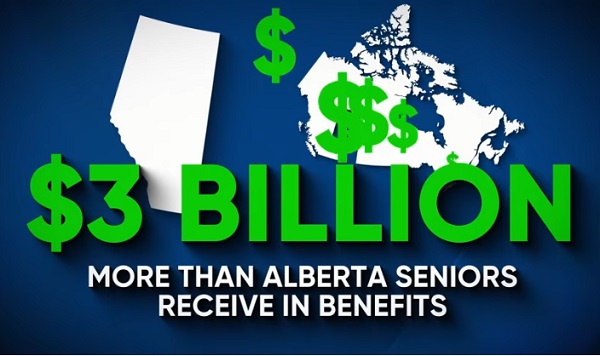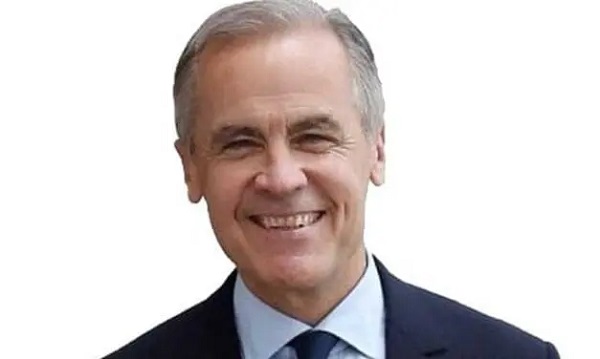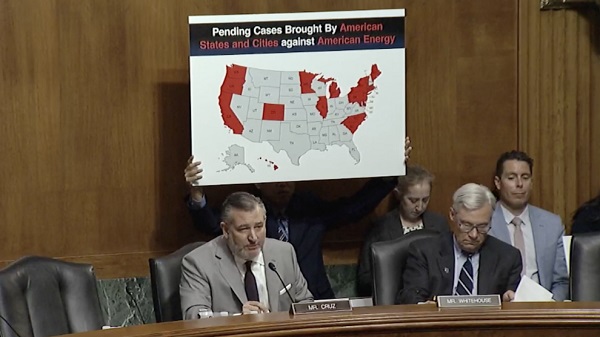Alberta
Province announces new target for Alberta Heritage Fund

Alberta’s government is taking action to grow the Alberta Heritage Savings Trust Fund to at least $250 billion by 2050.
In 1976, former premier Peter Lougheed had the foresight to create what is today commonly called the Alberta Heritage Fund. The initial purpose of this fund was to invest a portion of Alberta’s non-renewable resource royalties each year so the investment interest earned in the fund would reduce the province’s reliance on resource revenues.
For decades, contributions to the Heritage Fund were limited and investment earnings were spent instead of being reinvested. Now, Alberta is adopting a bold, new plan to grow the Heritage Fund and achieve long-term growth and financial stability for the province. When the fund reaches its goal of $250 billion, the province can use a portion of the annual interest accrued to offset any decreases in resource royalties, invest in key provincial infrastructure and grow and protect the Alberta tax advantage.
The roadmap details how the “Alberta Model” will use three components to grow the fund to $250 billion and eventually fund public services and vital infrastructure:
- Strategic investments: There is a strong focus on opportunities that maximize growth while supporting areas that matter to Albertans, such as technology, energy and infrastructure.
- Global partnerships: The model benefits from working closely with like-minded organizations and investors around the world, to access premier opportunities and bring new ideas and expertise back to the province.
- Strong governance: The model is structured to ensure transparent and responsible investment management, so that every decision is made with the long-term interests of Albertans in mind.
“Albertans deserve a Heritage Fund they can rely on – one that is focused on creating long-term growth and financial stability. We owe it to future generations of Albertans. The new Heritage Fund will lessen our dependence on natural resource revenues, diversify our economy, and create both wealth and prosperity for generations to come.”
This plan builds on the vision of former premier Peter Lougheed and builds on the recent investments into the fund. As of September 2024, the Heritage Fund is worth $24.3 billion. With a $2-billion commitment from Budget 2024, the fund is projected to increase to more than $26 billion by the end of the 2024-25 fiscal year. If all of the Heritage Fund’s investment income had been reinvested since inception instead of being transferred to the general revenue fund, the Heritage Fund would be upwards of $250 billion today, generating about $20 billion annually.
Now is the time to take decisive action. By saving and reinvesting today, Alberta will reduce its reliance on unpredictable non-renewable resource revenue. A renewed Heritage Fund that earns money year over year will secure a resilient and prosperous Alberta for generations to come.
“Our plan to grow the Heritage Fund is about securing Alberta’s financial independence and providing stability for our children and grandchildren and build a lasting legacy for all Albertans.”
Strong governance is needed to provide direction, deliver high returns for Albertans, and ensure future growth amid changing economic conditions. To help achieve this and carry out the overall Heritage Fund plan, Alberta’s government has created the Heritage Fund Opportunities Corporation to govern and grow all Heritage Fund assets. The new corporation will strengthen partnerships with global sovereign wealth funds, thereby unlocking access to new opportunities. The new corporation will be assisted in its work by a world-class board of directors that will strengthen the governance of Heritage Fund assets and support investment decisions independent from government.
The Heritage Fund Opportunities Corporation will be chaired by Joe Lougheed.
“The Heritage Fund assets belong to Albertans – and future Albertans. The HFOC will have a world-class, independent board of directors providing oversight and guidance in an accountable and transparent fashion. Working closely with the Alberta Investment Management Corporation, the objective will be to deliver long-term growth of the assets of the Heritage Fund for future generations. It is an honour to serve in this governance role.”
Related information
Agriculture
Lacombe meat processor scores $1.2 million dollar provincial tax credit to help expansion

Alberta’s government continues to attract investment and grow the provincial economy.
The province’s inviting and tax-friendly business environment, and abundant agricultural resources, make it one of North America’s best places to do business. In addition, the Agri-Processing Investment Tax Credit helps attract investment that will further diversify Alberta’s agriculture industry.
Beretta Farms is the most recent company to qualify for the tax credit by expanding its existing facility with the potential to significantly increase production capacity. It invested more than $10.9 million in the project that is expected to increase the plant’s processing capacity from 29,583 to 44,688 head of cattle per year. Eleven new employees were hired after the expansion and the company plans to hire ten more. Through the Agri-Processing Investment Tax Credit, Alberta’s government has issued Beretta Farms a tax credit of $1,228,735.
“The Agri-Processing Investment Tax Credit is building on Alberta’s existing competitive advantages for agri-food companies and the primary producers that supply them. This facility expansion will allow Beretta Farms to increase production capacity, which means more Alberta beef across the country, and around the world.”
“This expansion by Beretta Farms is great news for Lacombe and central Alberta. It not only supports local job creation and economic growth but also strengthens Alberta’s global reputation for producing high-quality meat products. I’m proud to see our government supporting agricultural innovation and investment right here in our community.”
The tax credit provides a 12 per cent non-refundable, non-transferable tax credit when businesses invest $10 million or more in a project to build or expand a value-added agri-processing facility in Alberta. The program is open to any food manufacturers and bio processors that add value to commodities like grains or meat or turn agricultural byproducts into new consumer or industrial goods.
Beretta Farms’ facility in Lacombe is a federally registered, European Union-approved harvesting and meat processing facility specializing in the slaughter, processing, packaging and distribution of Canadian and United States cattle and bison meat products to 87 countries worldwide.
“Our recent plant expansion project at our facility in Lacombe has allowed us to increase our processing capacities and add more job opportunities in the central Alberta area. With the support and recognition from the Government of Alberta’s tax credit program, we feel we are in a better position to continue our success and have the confidence to grow our meat brands into the future.”
Alberta’s agri-processing sector is the second-largest manufacturing industry in the province and meat processing plays an important role in the sector, generating millions in annual economic impact and creating thousands of jobs. Alberta continues to be an attractive place for agricultural investment due to its agricultural resources, one of the lowest tax rates in North America, a business-friendly environment and a robust transportation network to connect with international markets.
Quick facts
- Since 2023, there are 16 applicants to the Agri-Processing Investment Tax Credit for projects worth about $1.6 billion total in new investment in Alberta’s agri-processing sector.
- To date, 13 projects have received conditional approval under the program.
- Each applicant must submit progress reports, then apply for a tax credit certificate when the project is complete.
- Beretta Farms has expanded the Lacombe facility by 10,000 square feet to include new warehousing, cooler space and an office building.
- This project has the potential to increase production capacity by 50 per cent, thereby facilitating entry into more European markets.
Related information
Alberta
Alberta Next: Alberta Pension Plan

From Premier Danielle Smith and Alberta.ca/Next
Let’s talk about an Alberta Pension Plan for a minute.
With our young Alberta workforce paying billions more into the CPP each year than our seniors get back in benefits, it’s time to ask whether we stay with the status quo or create our own Alberta Pension Plan that would guarantee as good or better benefits for seniors and lower premiums for workers.
I want to hear your perspective on this idea and please check out the video. Get the facts. Join the conversation.
Visit Alberta.ca/next
-

 Business1 day ago
Business1 day agoCanada’s loyalty to globalism is bleeding our economy dry
-

 armed forces1 day ago
armed forces1 day agoCanada’s Military Can’t Be Fixed With Cash Alone
-

 Alberta1 day ago
Alberta1 day agoCOVID mandates protester in Canada released on bail after over 2 years in jail
-

 International1 day ago
International1 day agoTrump transportation secretary tells governors to remove ‘rainbow crosswalks’
-

 Alberta1 day ago
Alberta1 day agoAlberta Next: Alberta Pension Plan
-

 Crime2 days ago
Crime2 days agoProject Sleeping Giant: Inside the Chinese Mercantile Machine Linking Beijing’s Underground Banks and the Sinaloa Cartel
-

 Business1 day ago
Business1 day agoCarney’s spending makes Trudeau look like a cheapskate
-

 COVID-1921 hours ago
COVID-1921 hours agoCourt compels RCMP and TD Bank to hand over records related to freezing of peaceful protestor’s bank accounts






